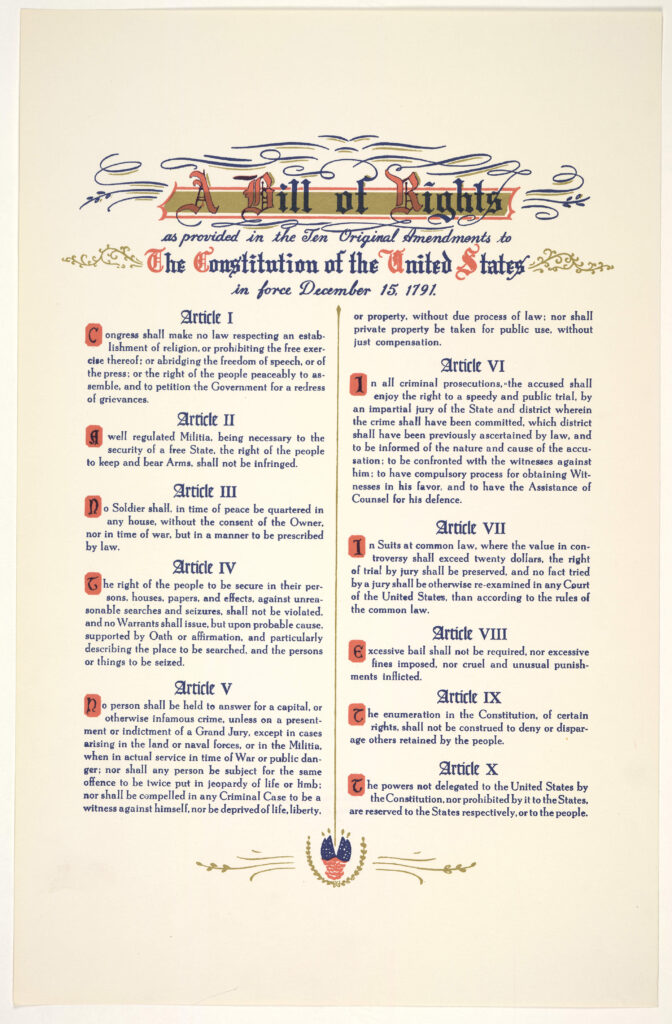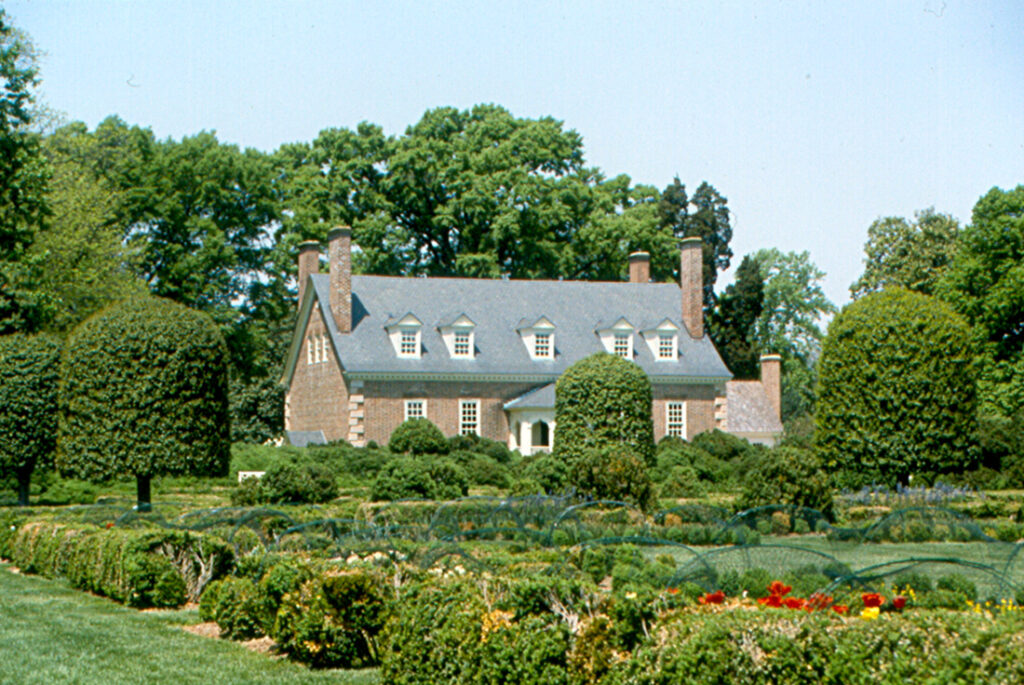Recently, I posted some hate mail on Facebook that the Arkansas Society of Freethinkers received from someone named Carey Dove. This email said that atheists have no heritage in the United States, that we aren’t real patriots, and that we don’t have the courage to step up and play with those who are.
Dear Carey Dove:
I’ve studied constitutional law, history, and my own genealogy. I know what my heritage is. Apparently, you don’t know me at all.
So, let me give you a little introduction to me, my knowledge about the Constitution, and whether or not I have any American heritage.
We’ll start with the constitutional lesson.
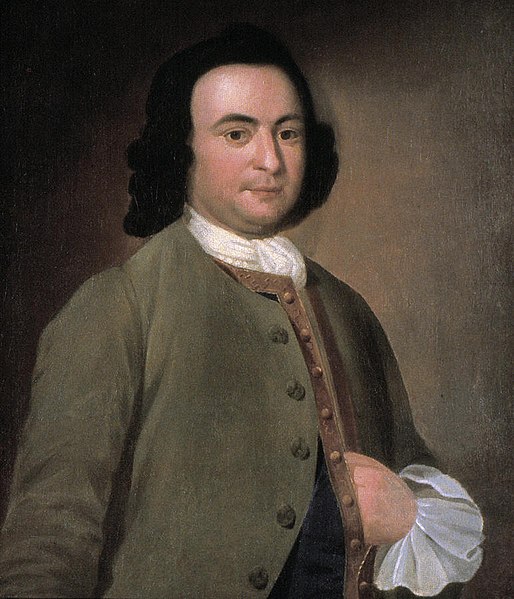
George Mason wrote the first bill of rights to be adopted in the Americas. His Virginia Declaration of Rights, written in the spring of 1776, influenced revolutions on two continents. The Declaration of Independence drew heavily from it. The Bill of Rights plagiarized it. The French Revolution’s Declaration of the Rights of Man and Citizen tracked it. Its final provision was to grant religious freedom to Virginians.
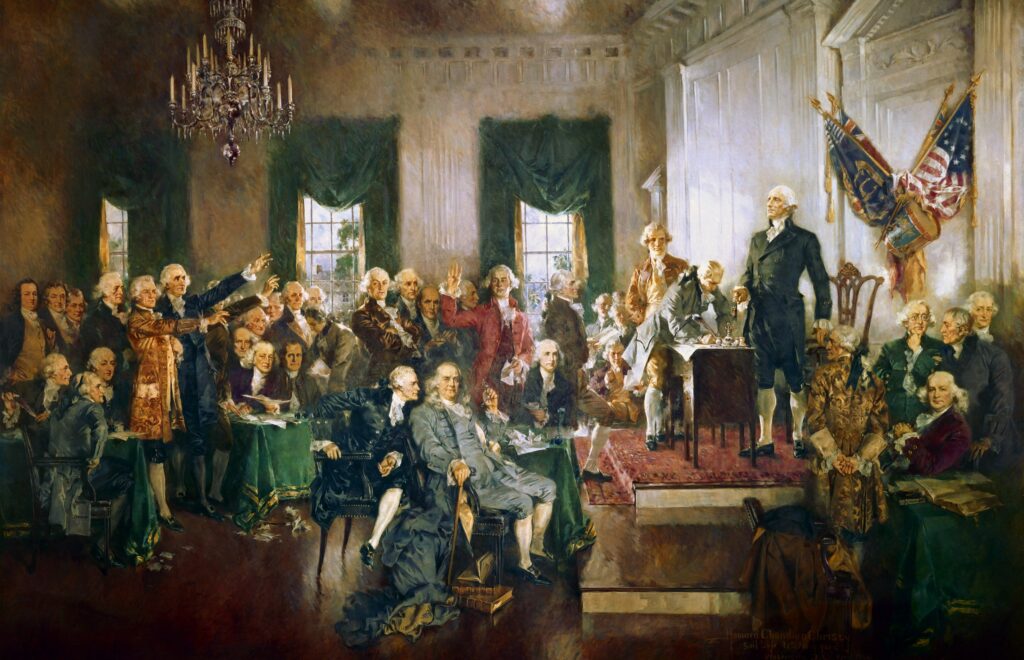
George Mason was a delegate to the 1787 Constitutional Convention in Philadelphia when fifty-five men from twelve of the newly formed states argued about how to replace the unworkable Articles of Confederation. Mason dominated the discussions. Ultimately, he was one of three delegates who voted against it, primarily because it did not contain a bill of rights – there were no constitutional guarantees of personal liberty.
He would be vindicated four years later when the Bill of Rights was adopted. The first two of those enumerated rights listed in the very first of the amendments address religious freedom.
So, now we have established that our constitution, and the history that preceded it, includes religious freedom. That means the freedom to dissent and to reject religion, because without the freedom to dissent and reject what we find to be wrong with religion, there can be no freedom in our practice of religion. And if we ultimately reject it all? That is the ultimate freedom.
So now I’ll embark on explaining the pedigree I have in this country.
A few years ago I was chosen to be on the Board of Regents that oversees the maintenance and operation of George Mason’s historic home in Virginia.
I was invited to sit on that board because of who my ancestors were. My European ancestors not only lived in colonial America, but they gave their time, talents, efforts, and money in public service to their colonies. They were politicians, military officers, doctors, judges, ministers, founders of schools, and founders of towns. They spoke out. They acted. They were patriots.
Who they were and what they did has shaped our country and its government. They shaped our states and our institutions. Their words and actions are this country’s heritage, and this country is their legacy.
On a very personal level, who they were and what they did has shaped who I am personally, and what I do. Their behavior, values, strengths, words, intelligence, and deeds are my heritage, and I am the culmination of their legacy.
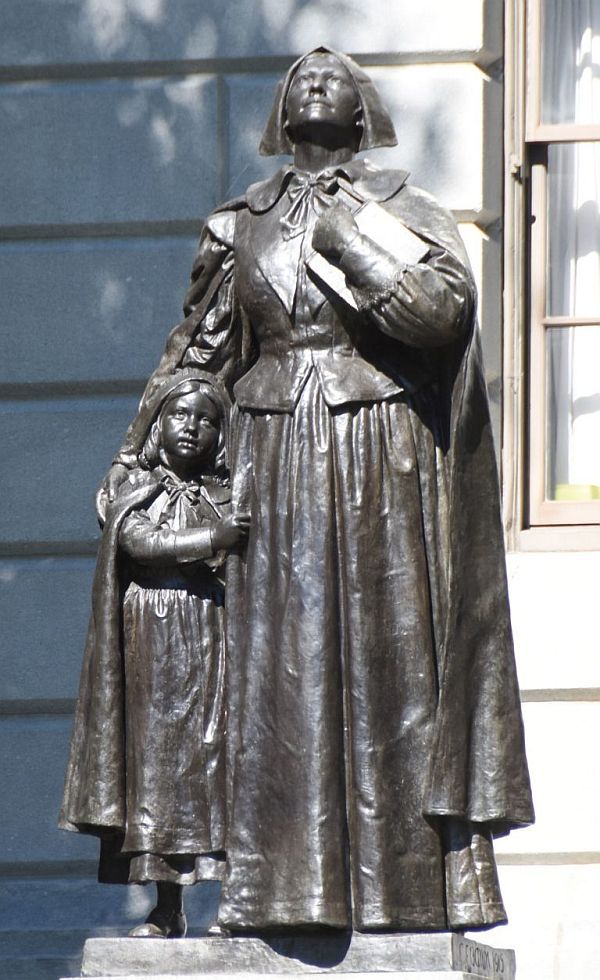
One of my favorite ancestors is my 11th great aunt, Anne Marbury Hutchinson. Anne Hutchinson was a well-liked and respected mother of 15 children. She was brilliant, charismatic, and a passionate intellectual. She was also the polestar of a controversy that nearly shattered the religious experiment that was the infant Massachusetts Bay Colony.
Anne and her husband Will came to America in 1634 with a Puritan minister named John Cotton, who would eventually become the most preeminent theologian in the Massachusetts Bay Colony. Unlike the Puritan ministers already in Boston when he and the Hutchinsons arrived, John Cotton believed that a person had no control over his salvation, which depended solely on God’s grace. This was Calvinist predestination in its purest sense, but it was contrary to what other Puritan ministers were teaching. They taught that the good works done by a person were the only ticket to salvation.
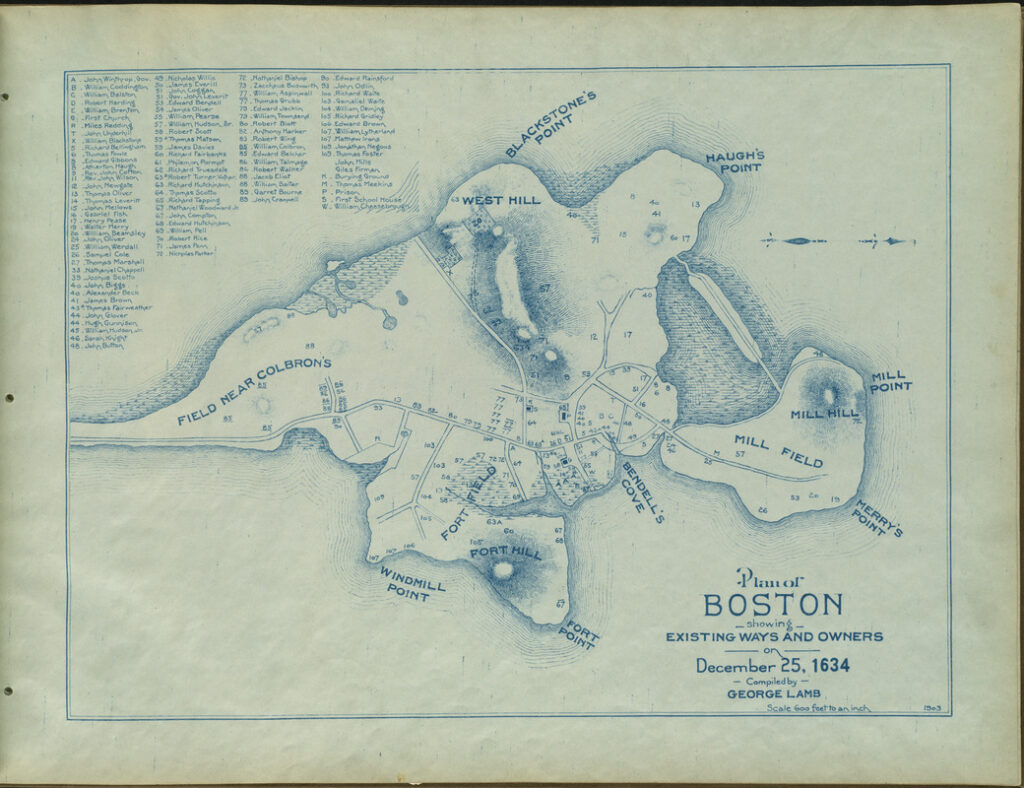
The Hutchinsons were wealthy in England but even wealthier in the colony. They built one of the largest homes in Boston. After church services, Anne Hutchinson would invite other women to gather in her home to discuss the sermons and the Bible. Anne’s meetings were very popular with the women of Boston, and soon men joined in.
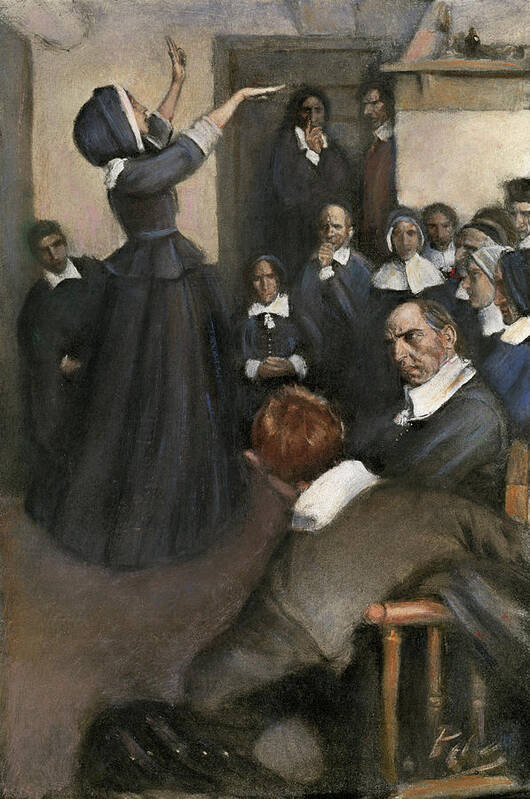
Like her mentor, John Cotton, Anne emphasized the importance of a state of grace over good works. People liked what she had to say. They were focused on feeding their families and running their businesses; they didn’t have time for unlimited acts of charity. As the number of people at her meetings escalated, Anne’s philosophy quickly leaked back to the Puritan clergy. Boston was a very small town in 1634.
The ministers claimed that Anne’s “unauthorized” religious gatherings “might confuse the faithful.” They argued the theological point of predestination – good works versus inherent grace – among themselves, and ultimately, Anne was charged with heresy – not because the leaders of Boston disagreed with her philosophy, but because they claimed she accused them of being more concerned with good works than the grace of God, to which she basically replied, “If the shoe fits…”
John Cotton, however, was not charged.
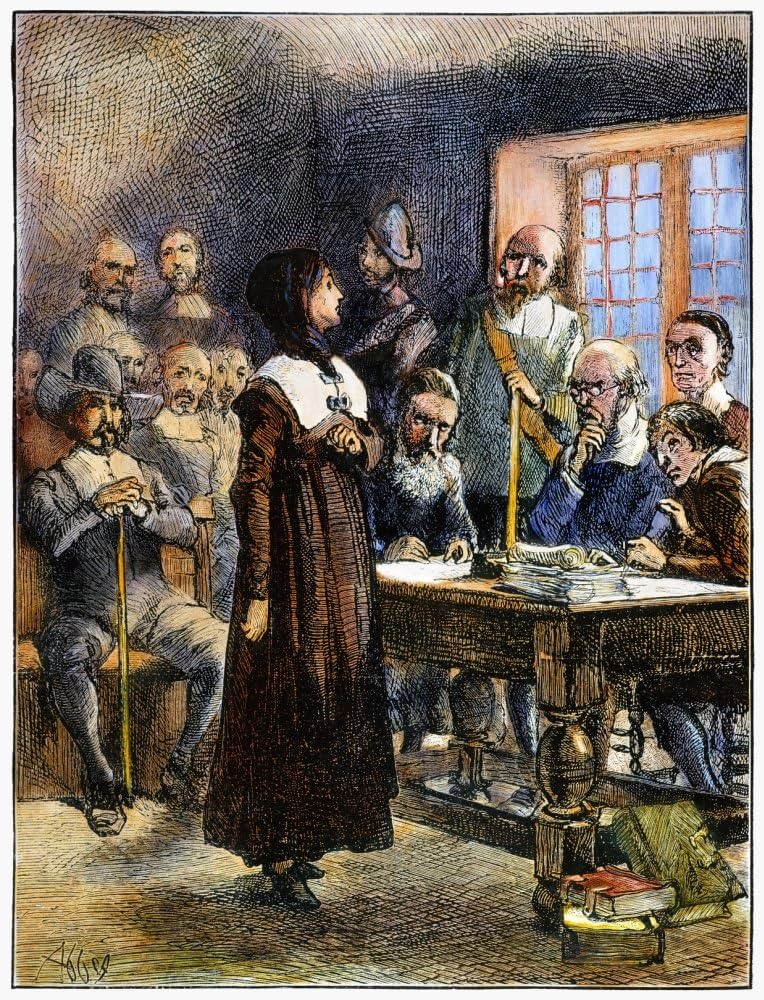
Anne was a woman, so she was not authorized to preach.
Left to her own devices, Anne Hutchinson, the first female defendant in any trial in America, defended herself at her heresy trial, which was prosecuted by John Winthrop, her neighbor and the governor of the colony. Governor Winthrop was most displeased with Anne’s religious dissent because his wife, Margaret, was very fond of attending the meetings in the Hutchinson home and brought home with her ideas he found unbecoming in a woman.
And like the Reverend Dimmesdale in Nathaniel Hawthorne’s The Scarlet Letter, who was modeled after him, John Cotton essentially betrayed Anne to the powerful citizens who brought the charges against her. When he was called to testify, Cotton denied that he had incited any dissent in Anne, and smiled and shrugged, claiming he did not remember the substance of any of his conversations with her.

Upon hearing his repudiation, Anne Hutchinson did something she had been forbidden to do: she began to teach the men. While her teaching had been in private before, here, now, at her trial for heresy, she took off the gloves and came out punching. “If you please to give me leave, I shall give you the ground of what I know to be true.” Without waiting for permission, Anne continued speaking, explaining her own history, her dissatisfaction with the Church of England, and her search for the truth she knew had to exist.
Governor Winthrop attempted to interrupt her. She ignored him and continued.
“God did discover unto me the unfaithfulness of the churches and the danger of them, and that none of those ministers could preach the Lord aright.” Scripture fell from her lips as she brazened on, daring to teach, despite an exchange with Governor Winthrop earlier in her trial during which they had exchanged barbs about the ability of women to teach. (“What, now you would have me teach you what the Bible says?” she mockingly exclaimed to him.)
One of my favorite quotes from Anne’s lecture during the trial is:
“How did Abraham know that it was God that bid him offer his son, being a breach of the sixth commandment?” Never mind that, chronologically speaking, Abraham knew nothing about any commandments.
Governor John Winthrop was also, conveniently, one of the judges, so naturally Anne Hutchinson was convicted, and in November 1637, she was banished from Massachusetts.
Anne was 43 years old at the time of her trial. She was also pregnant, and during the trial she suffered a miscarriage. The superstitious Puritans allied against her saw the severely malformed fetus as proof that Anne had fallen from God’s grace. Chromosomal anomalies are not uncommon in older mothers. This would be Anne’s last pregnancy.
Anne’s youngest sister was my 10th great-grandmother, Catherine Marbury Scott. Catherine and her husband, a shoemaker named Richard Scott, came to America on the Griffin with the Hutchinsons and John Cotton in 1634. They left Boston with Anne, first joining Roger Williams at a place he called Providence, in the Rhode Island and Providence Plantations secured by Williams as a separate colony. Williams had himself been banished from Boston in 1635, the year after the Hutchinsons and Scotts had arrived, for preaching that one did not need a a church in which to worship.
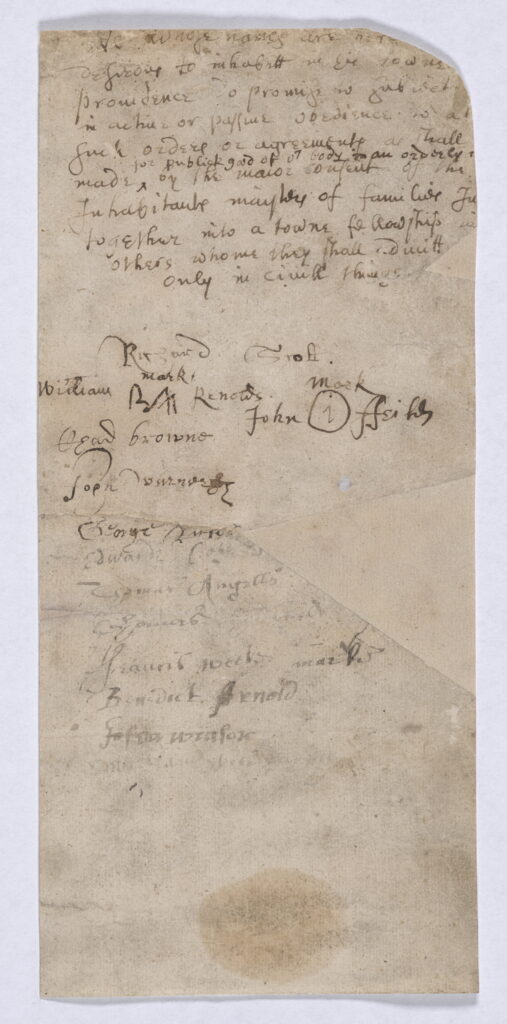
August 20, 1637
We whose names are hereunder, desirous to inhabit in the town of Providence, do promise to subject ourselves in active and passive obedience to all such orders or agreements as shall be made for the public good of the body in an orderly way, by the major consent of present inhabitants, masters of families, incorporated together in a Towne fellowship, and others whom they shall admit unto them only in civil things.
[Signed by Richard Scott and twelve others.]
In Providence, the Scotts, along with many other of Anne’s followers from Boston, created a new community. Richard Scott wrote the Providence Compact, which was then signed by each of the 39 heads of household to come to that place. They became Baptists for a while, then Quakers. Then, in 1660, Catherine returned to Boston to protest the punishment of two young Quaker men. For her efforts, she was stripped to the waist and flogged in public. Even though Boston had been unspeakably cruel to her sister 23 years before, Catherine did not hesitate to speak out when she saw the government do something wrong. She was a worthy bearer of her sister Anne’s torch.
Anne herself was afraid to stay in Providence, especially after her husband’s death. Massachusetts had rattled its saber at the Rhode Island settlers, claiming it had the right to govern them, so she fled with her children to Long Island. There, in 1643, she and all but one of her children were murdered by natives. How long might she have lived had she not been run out of Boston? How much more might she have contributed to the ideas of women’s rights and freedom of conscience had she remained in Boston?
Far from being dour, rigid Puritans, Anne and Catherine were firebrands.
Anne Hutchinson is a key figure in the development of religious freedom in the U.S., and in the history of women in ministry. She challenged authority, and she didn’t back down. A monument to her at the Massachusetts State House calls her a “courageous exponent of civil liberty and religious toleration.” She is easily the most famous – and infamous – Englishwoman in colonial American history.
Anne Hutchinson was a freethinker in the truest sense of the word: Dogmatic as she was in her own way, she seriously contemplated her religion, a deity, and the teachings of those who claimed to know, and then she drew conclusions for herself. The conclusion she reached was not the one that was favored in Boston in 1637. Nevertheless, she did not back down. She had the courage of her convictions, and today she is admired and even revered for her steadfastness.
I admire her enormously. Her courage in the face of adversity, her sustained intelligent wit, her sublime sarcasm – right to the face of the most powerful man in Massachusetts! This – this is a woman I can only hope to live up to as I exercise the courage of my own convictions.
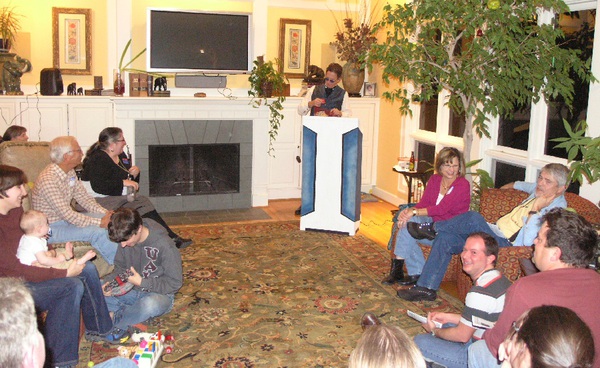
When I speak up and speak out, when I hold meetings in my home, when I dissent from religion, when I give my time, money, and talents to my community and to issues I care about, I am following the legacy of my heritage. I am doing exactly what my ancestors have done ever since they first came to this continent – and before.
For the 392 years that we’ve been in America, it’s been my family’s tradition to speak up and speak out and to act on our convictions.
And that, Carey Dove, is a very proud heritage, with full knowledge of where our religious freedoms came from, with full knowledge of when they did not exist here, and with full knowledge of what happens when dissent is not allowed – and why it most definitely and wholeheartedly is.

